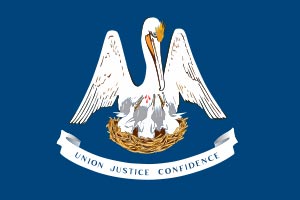Welcome to our Louisiana military bases information page. Louisiana was first explored by Spanish before it was colonized by the French in the early 1700s. The French colony of Louisiana was transferred to the Spanish at the end of the French and Indian War in 1763. In 1800, Napoleon reacquired Louisiana from Spain before he sold the colony to the United States as part of the Louisiana Purchase in 1803. A portion of what is now Louisiana was officially retained by Spain until 1819. Louisiana is bordered by Arkansas, Mississippi and Texas.
Louisiana is home to several military bases, including active-duty and reserve installations, as well as training sites. Here is a list of military bases located in Louisiana:
- Barksdale Air Force Base
- Fort Polk
- Naval Air Station Joint Reserve Base New Orleans
- Louisiana Army National Guard Training Site
- Louisiana Air National Guard Training Site
- Louisiana National Guard Joint Force Headquarters
- Louisiana National Guard Recruiting and Retention Battalion
- Louisiana National Guard Military Funeral Honors Program
- Louisiana National Guard Youth Challenge Academy
Military Bases in Louisiana
Camp Beauregard
Used as the main training platform for the Louisiana National Guard, Camp Beauregard also supports Department of Defense and LANG training. The history of this base goes all the way back to WWI when it was used as a mobilization sector for US military forces. In WWII, the hot and humid environment was a great training ground for troops entering war efforts in East Asia. Today it serves as a way to keep the Louisiana National Guard ready to jump into action for any State of Federal Emergency.
Fort Polk
Fort Polk is unique because it’s the only place the Army will both train and deploy units for combat missions. Under the command of the Joint Readiness Training Center of the 4th Brigade, units that are hosted here include the 10th Mountain Division, the 162nd Infantry Brigade, the 1st Maneuver Enhancement Brigade and the Army Garrison and Bayne Jones Army Community Hospital. The JRTC uses Fort Knox to deliver advanced training to the Army, Air Force and Navy forces. It played a large part in deploying troops and reserve forces to support Operation Enduring Freedom, Iraqi Freedom and Noble Eagle.
Barksdale Air Force Base
Barksdale AFB is the home of the 2nd Bomb Wing which holds the distinction of being the oldest wing in the US Air Force. The base hosts around 44 B-52 bombers and takes very seriously its mission to protect the nation and its global interests ANYTIME – ANYWHERE. The Mission Group of the 2nd Bomb Wing is made up of 7 squadrons and the operations and maintenance groups have 4 squadrons each. The medical group has 7 offices of its own. The base also hosts several tenant units, including the DET 13-ACC TRSS and the 49th Test and Evaluation Squadron. This base played a very important role in Operations Just Cause, Desert Shield and Desert Storm. In fact, fully 10% of all bombs dropped by the USAF during the Persian Gulf War came from Barksdale.
Naval Air Station Joint Reserve Base
NAS JRB New Orleans is home to the 159th Fighter Wing of the Louisiana Air National Guard (LANG), Coast Guard Air Station and a Marine Corps Reserve light helicopter attach squadron. The 159th is nicknamed “The Bayou Militia”. They fly F-15C Eagle fighters and are charged with providing air defense over the Gulf Coast in support of NORAD (North American Aerospace Defense Command). In addition to this most important mission, all units stand ready to assist the State and Federal Governments for any search and rescue, law enforcement and Homeland Security needs.
Louisiana State Flag History

The birds form a stylized fleur-de-lis, a symbol associated with Louisiana’s French origins. Between 1912 and 2006, a modified version of the original flag was used that did not show the blood dripping from the mother. In 2006, the current version was adopted that restored three drops of blood to the pelican’s breast and revised the appearance of the pelican and her chicks. The brown pelican is a prominent symbol of Louisiana and the state bird. While pelicans are attentive mothers, they do not tear at their own flesh to feed their offspring as depicted in the flag. This is entirely a representation of self sacrifice associated with the state.





Leave a Reply
Your email is safe with us.